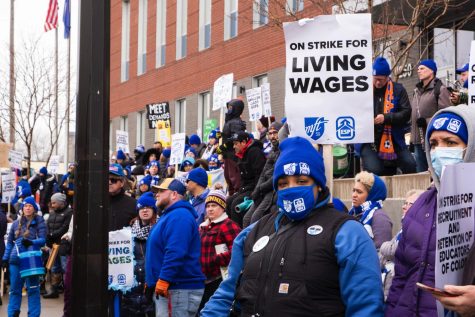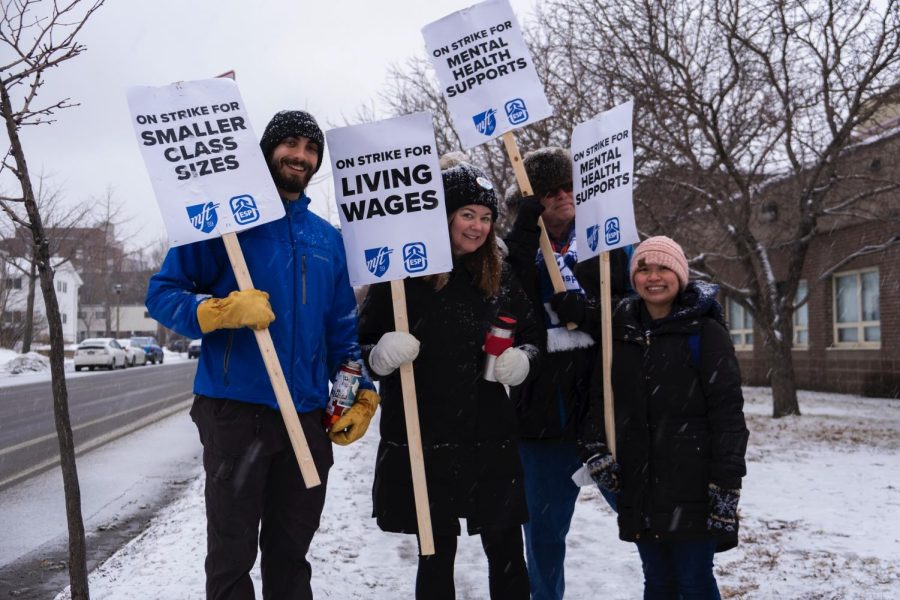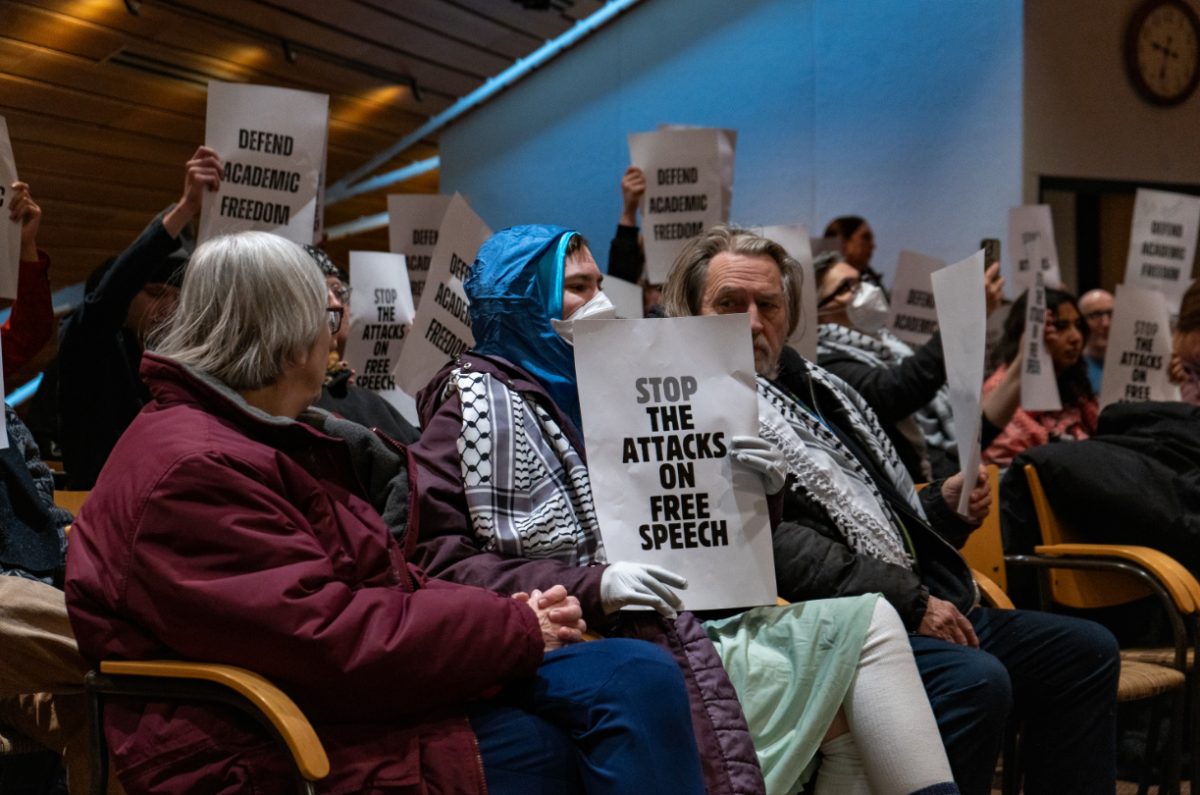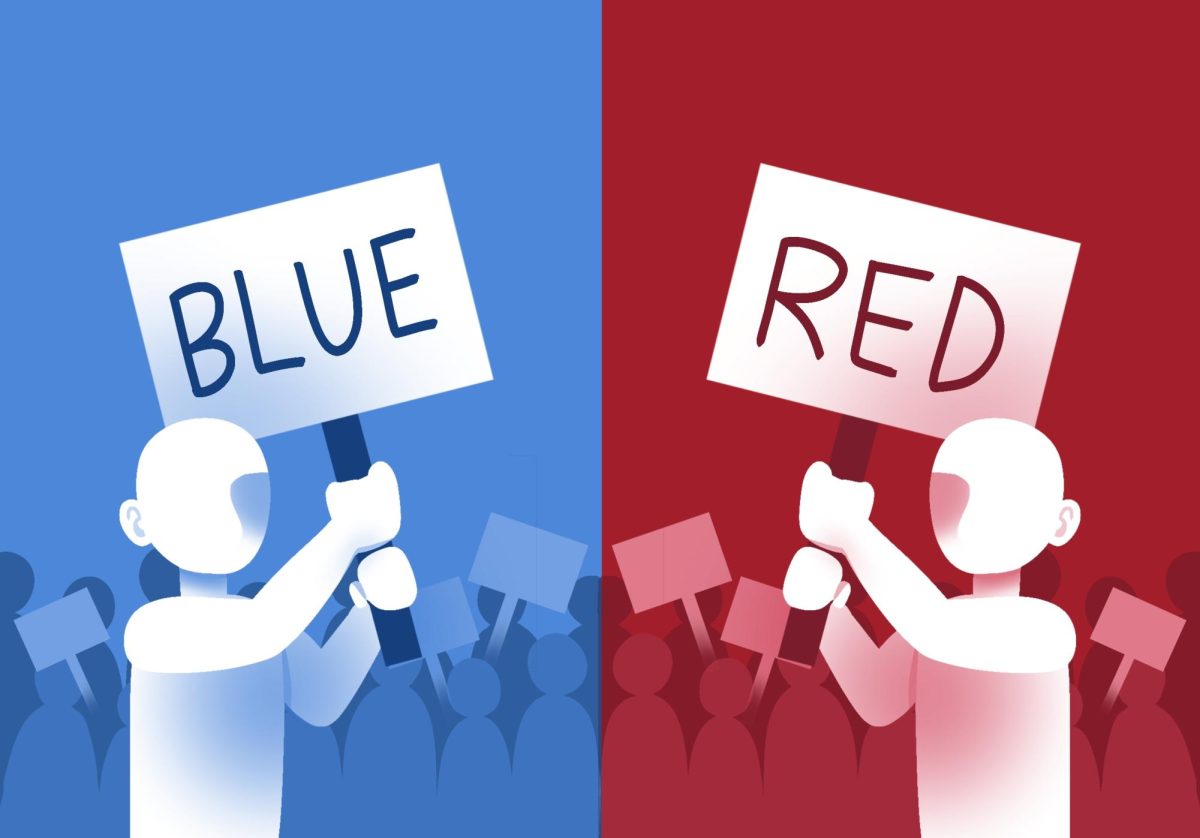Minneapolis teachers prepare for their third week of striking as the teachers’ union and Minneapolis Public Schools (MPS) have not reached a resolution, impacting teachers, parents and students.
Negotiations between the Minneapolis Federation of Teachers and Educational Support Professionals (MFT) and MPS resulted in a strike that began March 8 and will last indefinitely. They are demanding higher wages, smaller class sizes and mental health support, according to the MFT strike website.
On March 16, MPS continued negotiation with MFT and provided them with a proposal, called the MPS Equity Proposal, which had offers about MFT’s top priorities. The proposal includes salary increases and class size adjustments.
When asked for comment MPS referred the Minnesota Daily to its website and recorded press conferences.
In one post from March 16 on the MPS website, it said while talks continue, MPS and MFT remain “far apart” on wages for teachers and educational support professionals because MPS said they have reached their financial limits and it would not be possible to bring more money to the table.
In a recorded press conference from March 17, MPS Superintendent Ed Graff said the district is still working to come to an agreement with MFT and to getting students back in the classrooms.
“We’re still optimistic that we’re going to make progress,” Graff said. “We’re still committed to getting this contract settled in a way that is representative of the values we have as an organization, both for our employees and as well as the financial responsibilities that we share with the community.”

Teachers across Minneapolis have been picketing and marching every day at locations across the metro area, such as the Governor’s Mansion, State Capitol and on Lake Street, since March 8. They held signs that said “On strike for mental support” and “The time is now.”
Leierwood said she has picketed every day outside this school since the strike started.
“We need competitive pay because we need to be able to compete with surrounding districts,” Mina Leierwood, a teacher at Marcy Arts Magnet Elementary School, said. “Teachers are leaving our schools for neighboring districts because they pay better.”
She said some people think the main demand is for better teacher pay, but the teachers’ highest demand is pay raises for the Educational Support Professionals (ESPs). ESPs are responsible for helping teachers in the classroom, especially with students that need extra help, along with taking the students to and from lunch and recess.
“Our ESPs are leaving our district for other jobs. These are the people that our teachers absolutely depend on. We can’t do our job without the ESPs,” Leierwood said. “When you are competing with Target or Menards for your support staff, you know that the culture doesn’t value education.”
These schools are about community and the community is behind the teachers, Leierwood said. Families have brought doughnuts, coffee and other food items to the teachers who are picketing. Ashley Zapata, president of the Pratt Parent Teacher Organization (PTO) said her kids’ teachers have been reaching out to check on them while the students have been away from school since the strike started.
Lillian Bubser, a special education assistant at Pratt Community School and parent of an MPS student, said she has to help in the classroom beyond her position, like supervising kids at lunch or recess, because of the large class numbers and low staff.
“Many kids’ [Individual Education Programs] state that they need one-to-one with a teacher, but with three teachers to eight students, no one is getting their one-to-one care,” Bubser said.
Individual Education Programs (IEPS) are legal documents for each public school student in special education. The documents state the individual needs of a student.
Bubser said she thinks that ESPs are not paid living wages, therefore it’s hard to find people to fill the position. With low staff, Bubser has said she has seen many teachers have to speed through or skip their lunch and prep hours because they are needed elsewhere.

Students and families stand behind teachers
Along with the teachers, many students and families have joined the teachers at the picket lines, participating and leading chants, Bubser said.
Zapata said the PTO met on March 15 and used the meeting to provide information about the strike to members of the PTO.
“I hope that the district and the government are listening and willing to act on the things that [educators] are saying they need,” Zapata said. “[The district is] not in those on-the-ground positions doing this work.”
The strike has shut down school for around 30,000 public school students, in the Minneapolis Public School District. With the end of the strike unknown, parents have had to find other alternatives for childcare.
Zapata said the space at the Pratt PTO meeting was also used to provide parents with childcare resources and parental support. Community resources for childcare were discussed, as well as ways to financially contribute to educators.
Zapata has three kids and said while it has been stressful with her kids at home during the strike, she wants educators to get the support they need.
“My hope is that the district recognizes that it’s not that educators don’t care, I would say it’s largely the opposite. Educators care so much,” Zapata said. “They’re taking a stance so that the people they serve have what they need and they themselves have what they need so that they can continue to serve our students.”















Meat Eater
Mar 21, 2022 at 12:41 pm
The problem is decreasing enrollment, currently, as Urban Hipsters move in, driving up the cost of housing, families move out.
Another problem is that parents who care about their children’s education, some of them do not want to gamble their child’s future on the Mpls school system, so they move them to a private school, or simply move their family out of the district. This further erodes the systems ability to deliver a quality education, and the downward cycle continues. Very sad state of affairs, the system was the best in the state 60 years ago.
Pretty simple, the Mpls school district has X dollars to spend, how do
you want them to spend it? If you increase spending in one area, it must be reduced in another.